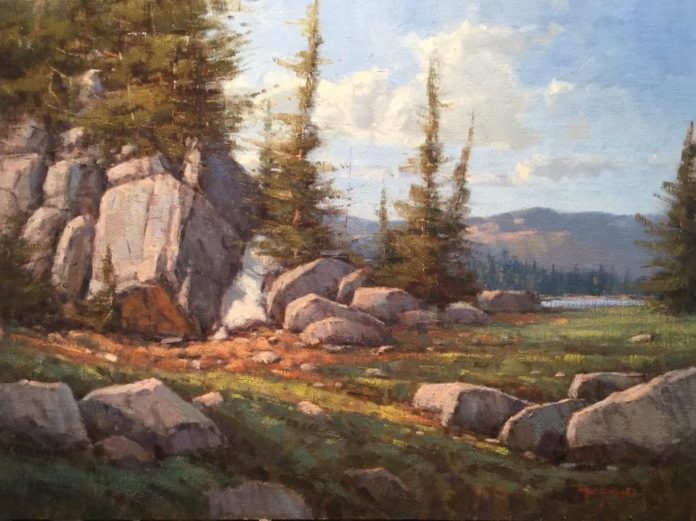Brushwork is the last of the five tools in the “Painters Toolbox of Expression,” and this tool deals with texture. Because textural technique is very personal to the individual artist, no one approach is considered to be correct.
Like edges, special brushwork is not even necessary, but more an enhancement to a well-designed painting. It’s generally true that brushwork is rarely spoken of by art teachers, and therefore seldom taught, especially on the university level.

One reason for this is that brushwork is a technique, and no amount of technique can save a bad painting. Also, technique is generally looked down upon because of its tendency to become flashy, and sometimes a slick gimmick that is designed to impress the viewer. Thus, the bad rap!
In addition to that, brushwork by itself cannot make up for an artist’s faulty drawing, color, and value relationships, which all play a part in establishing the abstract framework of a successful painting. Having said that, brushwork can be deceptive to the uninitiated, who mistakenly think that a painting is good based solely on flashy brush or palette knife technique.
The saying “Trowel it on and sell a million paintings” comes to mind! How about, “Trowel it on tastefully and sell a million paintings”? I think that would be a better goal. Great brush technique, coupled with the other four tools, is an unbeatable combination in the creation of quality work! While sales are nice, quality should never be sacrificed in the bargain! The truth is, quality will always sell, even if it takes longer at times.
Because the teaching of brushwork was largely ignored for decades, many university painting instructors themselves never learned to use this vital, expressive tool and therefore were not able to pass it on to future generations of artists.
This situation created an environment in the painting world, as individual artists who were interested in traditional painting methods resorted to personal research on past masters to rediscover the almost-lost art of the brush.
Many of these artists, in turn, have been willing to pass this information on. But unfortunately, some don’t like to teach brushwork, due to the pervasive — and not altogether unfounded — opinion that technique will just happen when an artist attains a certain amount of competence.
This may be true to a certain extent, and the opinion that technique can be dangerous in the wrong hands has lots of current examples to support it!
Good brushwork, on the other hand — to borrow an example from the music world — is like jazz, appreciated by the sensitive eyes of those who are in tune with its quality. Unfortunately, the subtleties of good brushmanship are often lost on viewers, including many collectors, who may have fallen prey to the same dearth of information their artist counterparts faced.
Accomplished artists who have gained skills in this area often think that it is a great compliment when another artist whose work they admire likes a painting of theirs — but at the same time will jokingly refer to that as the “kiss of death”! Why? Because some of the technically best work they do will sometimes sit on the gallery walls the longest. This is because the subtleties of a painting often go unnoticed and will sometimes get passed over for other pieces that have a sentimental connection to the viewer, or have a certain “bling” quality that screams for attention at the expense of quieter pieces. But don’t feel bad. As I indicated above, quality will eventually find a home!
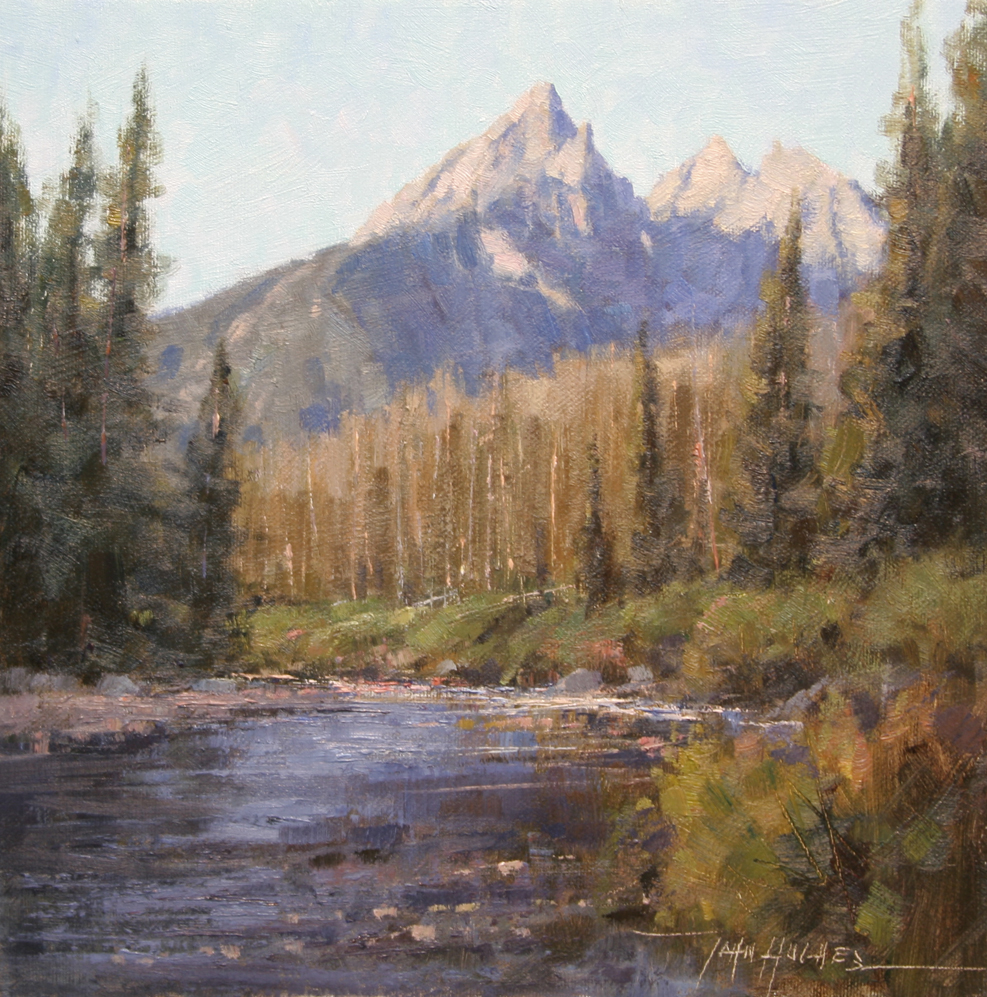
In keeping with the instructional nature of this series, we’ll now get down to the nitty-gritty of brushwork and the many expressive ways brushes can be used.
Imagine this scenario for a moment:
You go into the paint store and there they are, brushes galore, all lined up in perfect condition, from large to small, just waiting to be used! There are flats, filberts, brights, rounds, hog bristles and soft hairs; it’s a feast for the eyes of a painter! Unfortunately, this pristine condition may tempt the artist to keep them that way, to the detriment of their work. That’s the result of not using brushes to their capacity.
I think we’ve all occasionally seen examples of this in shows and galleries. Paintings that look like the brush was used in much the same way as a house painter would, or, worse, in a “rubber stamp” technique. “Oh, this artist was using a bright, or that one a fan brush. How convenient that all the marks on the canvas are so uniform and look exactly like the brush that made them!” Ouch!
It reminds me of an art association meeting I attended many years ago, where some well-meaning beginning artist stood up to give a “hot tip” to the group! We were all admonished to use a pizza cutter to roll through our paint when we needed to make objects like telephone wires and long fences. What a nifty idea!
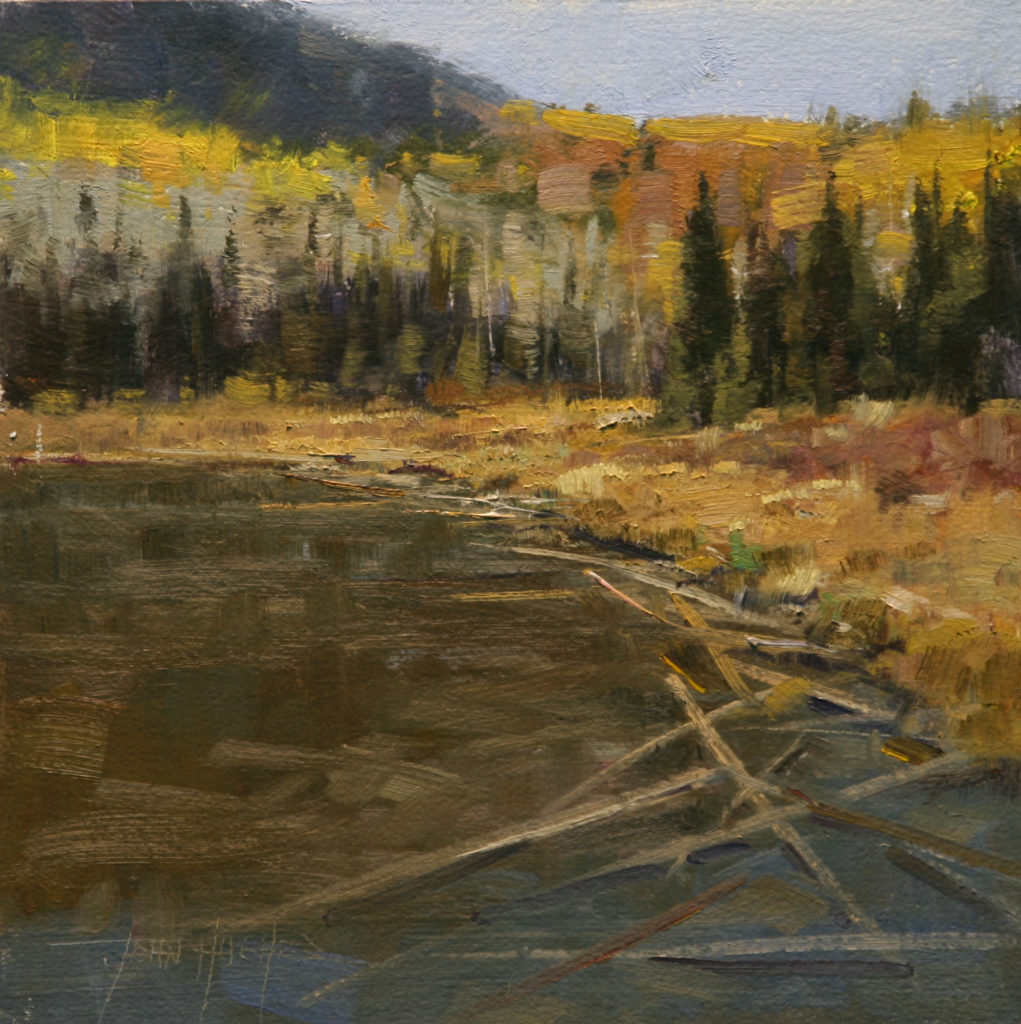
Sorry, my amusement with this is becoming apparent! I mean I had all I could do to hold it together!
Ok, now that I’ve covered what not to do, let’s look at some of the ways to swing a brush and not hurt ourselves!
Look, maybe rubber stamping can be useful at times, but I think some variety of brushwork on the canvas would be advantageous, right? This brings me to the very design of oil painting brushes in the first place. Number one, they all have long round handles; that alone should serve as a clue. In other words, getting back on the handle is often advisable. The fact that the brush has that long smooth surface, says that you should be all over that thing in different situations.
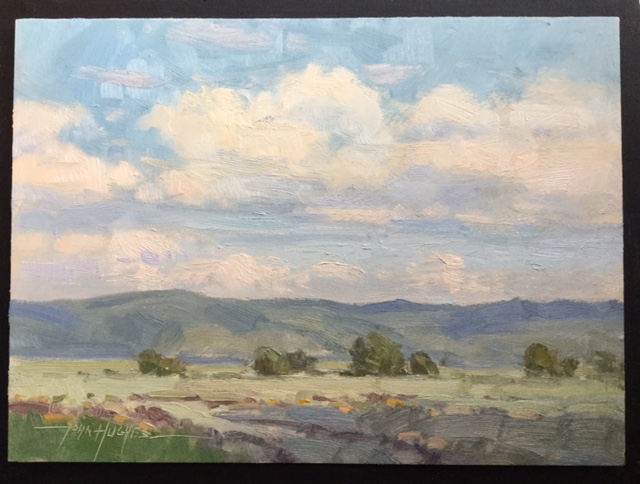
Sometimes you might want to swing from the shoulder to produce long expressive washes in the beginning stage of a painting. Sometimes gipping the brush like a shovel, close to the ferrule while holding a bright, is a great way to deposit large juicy impastos. Pulling the flat or filbert brush fully loaded with thick paint and a quick motion can leave a mark that is broken and vigorous in nature; this is a great way to create expressive edges. The brush can also be used with the tip perpendicular to the canvas to make subtle adjustments that dig into the wet paint layer.
Conversely, holding the handle parallel to the painting surface and loading on lots of paint with little pressure will deposit thick paint over an already wet surface. The brush can be pushed rather than pulled, which will create marks that can only be understood by trying it. Stippling or using the brush in a stamp fashion does have its place, if it’s not overused! (Just please, leave the pizza cutter in the kitchen!)
What I’m trying to express here is that the brush can be abused, which is a good thing in this case! The sky is the limit — one doesn’t need permission to think up ways to use a brush. Go for it and do whatever fits your purposes in the moment!
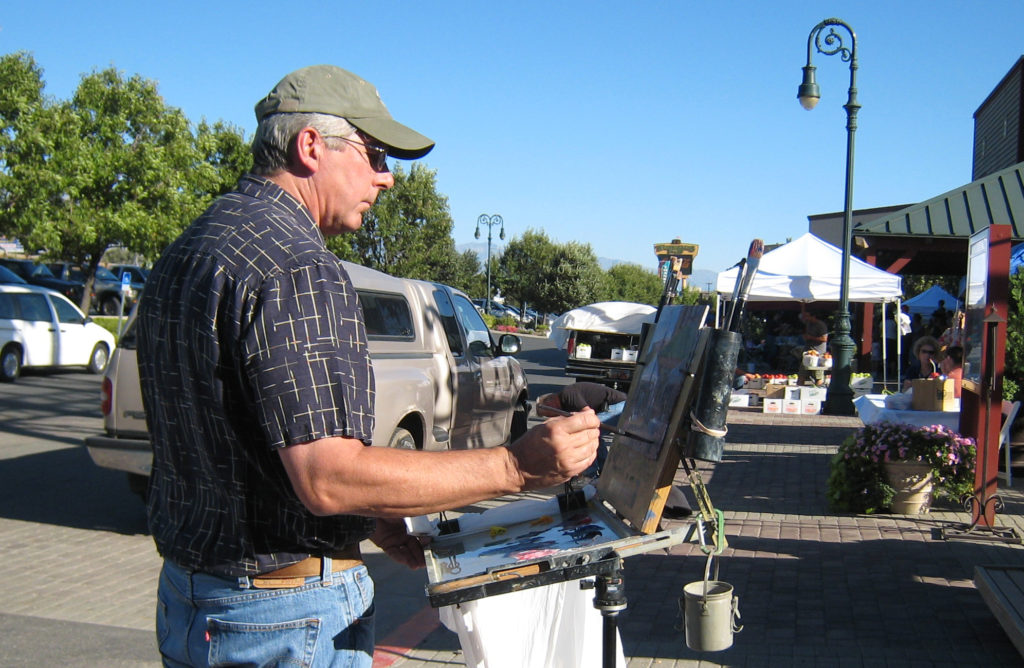
Of course, save some of your best brushes for making crisp clean marks that can only be produced with those new, pristine tools of your choice! It’s also nice to have a variety of brushes in your quiver that can best suit the requirements of your painting when needed. Additionally, it is not necessary to use a ton of brushes in one painting session. There are times that I’ve done a whole study with one or two brushes, but even then, it was nice to know that the others were there.
To borrow a theme from football, the whole team was at the game, but some of them sat on the bench hoping to be played!
Until next time, cheers and happy painting!
Visit EricRhoads.com to find out all the amazing opportunities for artists through Streamline Publishing, including:
– Online art conferences such as Plein Air Live
– New video workshops for artists
– Incredible art retreats
– Educational and fun art conventions, and much more.
> Subscribe to Plein Air Today, a free newsletter for artists
> Subscribe to PleinAir Magazine so you never miss an issue

